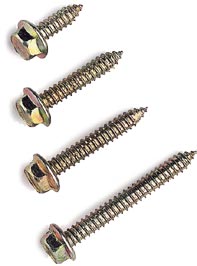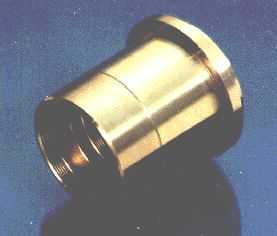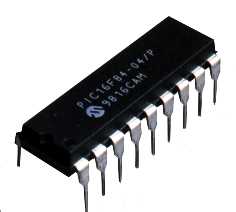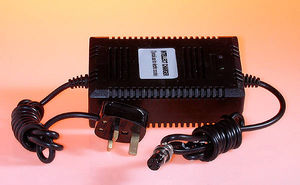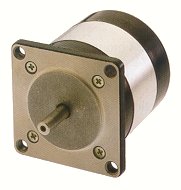Wealth Without Money
|
English • العربية • български • català • čeština • Deutsch • Ελληνικά • español • فارسی • français • hrvatski • magyar • italiano • română • 日本語 • 한국어 • lietuvių • Nederlands • norsk • polski • português • русский • Türkçe • українська • 中文(中国大陆) • 中文(台灣) • עברית • azərbaycanca • |
This is a copy of the first appearance of the idea for RepRap on the Bath University website on 2 February 2004.
-- Main.AdrianBowyer - 2 Feb 2004
Wealth without money
The background to the Bath Replicating Rapid Prototyper Project
Karl Marx and Frederick Engels wrote in the Communist Manifesto that, "By proletariat is meant the class of modern wage labourers who, having no means of production of their own, are reduced to selling their labour power in order to live." This diagnosis is essentially correct; it is a commonplace that people with resources can quite easily use them to acquire more, but people without have to try exceptionally hard to get anywhere, and most of them never do. Marxism then goes on to say that the way to fix this problem is for the proletariat to seize the means of production by revolution, which is a good candidate for the all-time worst-idea in human history. Whenever it is applied the main things produced are corpses, and in the last hundred years the body count from this idea's application was even worse than that from Nazism. So the Marxist prescription, unlike its diagnosis, is plain wrong. Its prognosis also turns out to be wrong - it predicted that the revolution would happen first in the most industrially-advanced nation (Britain at the time), whereas in practice Marxist revolutions tend to happen in countries making the transformation from an agrarian economy to an industrial one.
So Marx's marks were 33% - not very good. But keep his correct diagnosis in mind, and read on.
In the mid twentieth century John von Neumann proposed a Universal Constructor - a machine that could copy itself. Since then a number of people have realised his idea, both in simulation, and physically. However, in the case of physical implementations, all current systems require a supply of very complicated and intricate building blocks. The purpose of this short web-page is to persuade you that there is one development in direct writing and rapid prototyping technology that is not only the most important, but that is more important than all the others put together. That development would be a direct writing or rapid prototyping machine that can make a copy of itself. I contend that this is the first useful version of von Neumann's Universal Constructor that we can have. Here, by "useful", I mean that it would actually make stuff that we want. While I am talking of what I mean, and before arguing why this is so important, let me say exactly what I mean by "make a copy of itself". I mean a rapid-prototyping machine that can make all its components other than:
| Self-tapping steel screws, | Brass bushes, |
| Lubricating grease, | Standard electronic chips such as microcontrollers and optical sensors, |
| A standard plug-in low-voltage power brick, and | Stepper motors. |
This list is an attempt to make a compromise between immediately-achievable technology and the desirable aim of shortening or eliminating it altogether. Note that it implies a machine that is capable of building three-dimensional objects from both an electrically insulating material and a conductor, like our deposition head in the picture. After the components have been made, it is quite acceptable for a person to assemble the machine from those components and the standard parts listed above, and to copy the firmware from the parent machine's microcontroller into that of the child.
The original idea of a Universal Constructor was of a machine that would both self-copy and self-assemble - as a bacterium or a daffodil do. The machine I propose will self-copy, but not self-assemble. In nature all four possibilities exist: things that neither self-copy nor self-assemble, like rocks; things that self-copy but don't self-assemble, like viruses; things that self-assemble but don't self-copy, like proteins; and finally things that both self-copy and self-assemble, like you and me. And you and I are quite dexterous at assembling machines that we want (even if we do swear at flat-pack furniture), so the second alternative (self-copying without self-assembly) is economically and practically the most interesting option. This web-page, therefore, is about making a useful virus that is as big as a fridge...
It would also be useful (though not initially essential) if the machine could grow itself by making appropriate components to extend its own movement axes, and could self-calibrate (possibly using an accurate reference object or a pattern of standard size) so that child machines would make products as accurately as their parent machine.
The three most important aspects of such a self-copying rapid-prototyping machine are that:
- 1. The number of them in existence and the wealth they produce can grow exponentially,
- 2. The machine becomes subject to evolution by artificial selection, and
- 3. The machine creates wealth with a minimal need for industrial manufacturing.
Let us examine those three statements in more detail.
Firstly, and most obviously, exponential growth: all current engineering production generates goods in an arithmetic progression. Sometimes this is very fast; suppose an injection moulding machine makes plastic combs at the rate of 10,000 an hour. Suppose further that a self-copying rapid-prototyping machine can make one copy of itself a day, and also just one comb. After merely 18 days, the rapid-prototyping machines will be making more combs than the injection moulder, assuming people give them house-room. Self-copying rapid-prototyping machines can multiply exponentially and so can the goods they produce. No technology other than self-copying can do this, and exponential production growth is the fastest that is mathematically possible (which is why all living organisms use it). At one machine per day, after one month there would be a machine for every man, woman, and child on the planet. Raw materials might be a bit of a bottle-neck, of course...
Secondly, evolution: for the machine to be able to copy itself, its own CAD design needs to be available along with it, for example on a copyable CD. People may just have their machine copy itself, or they may improve the design (and its firmware) and have their existing parent machine make their new, and better, child machines instead. That's how we made a labrador out of a wolf. Thus the machines will improve; good designs will come to predominate, and the lesser ones will fall by the wayside. This is almost the same as Darwinian evolution, but with one important difference: in nature, mutations are random, and only a tiny fraction are improvements; but with self-copying rapid-prototyping machines, every mutation is a product of analytical thought. This means that the rate of improvement should be very rapid, at least at the start. It also means that the initial design does not need to be very good, as long as it's capable of making a copy of itself and producing some other useful objects. Evolution can be relied on to make very good designs emerge quickly. It will also gradually eliminate items from my initial list of parts that need to be externally supplied. Finally here, note that any old not-so-good machine can still make a new machine to the latest and best design.
Thirdly, the minimal need for industrial manufacturing: it does not matter how much the first machine costs, the second will only cost as much as its raw materials and its assembly. And so will all subsequent machines. A company (or an individual) who acquires one machine can thereby have any number they want. This could turn rapid prototyping from a development into a production technology. It also means that people of modest means will be able to own them, and also let their friends have copies. They will be able to make themselves a new flute, a new digital camera, or just a new comb by downloading the designs for them from the Web. Some of the designs will be sold; some will be available free. Industrial production may be needed for the raw materials in considerable quantities, and will be subject to the normal market forces that keep the price of non-innovative standard products low. (Note that strategies such as those used by printer manufacturers to keep the price of consumable inkjet cartridges artificially high - having unique protected designs, and incorporating counter chips to prevent refilling - will not work with the raw materials for self-copying rapid-prototyping machines because people will simply re-design the machines to bypass such artificial restrictions on the materials they consume.) However, there is also another route to the creation of raw materials, and that is to use polymers like polylactic acid that can be made by fermentation from biomass. Thus a person with a few tens of square meters of land on which to grow a starch-crop (like maize) could make their own polymer (the machine being able to make the fermenter, of course). Then not only would the machine be self-replicating, the material supply would be too. In addition, it would even take CO2 out of the atmosphere and lock it away in plastic goods, though polylactic acid is biodegradable.
- - o - -
I have no need to buy a spare part for my broken vacuum cleaner when I can download one from the Web; indeed, I can download the entire vacuum cleaner. Nor do I need a shop or an Internet mail-order warehouse to supply me with these things. I just need to be able to buy standard parts and materials at the supermarket alongside my weekly groceries.
The self-copying rapid-prototyping machine will allow people to manufacture for themselves many of the things they want, including the machine that does the manufacturing. It is the first technology that we can have that will simultaneously make people more wealthy whilst reducing the need for industrial production.
However, when everyone has a wealth machine in their attic, they will make things on a whim, and most of those things will be junk. Also, there will be no real need to make things durable - when something breaks, people will just make another. Soon we will all be knee-deep in broken or unwanted consumer goods and these will need to be efficiently re-cycled back into raw building material. I originally thought that, along with building-material production and distribution, this recycling was going to be a big industrial opportunity. Then I realised that every machine can make its own small recycler - it can eat.
- - o - -
So the replicating rapid prototyping machine will allow the revolutionary ownership, by the proletariat, of the means of production. But it will do so without all that messy and dangerous revolution stuff, and even without all that messy and dangerous industrial stuff. Therefore I have decided to call this process Darwinian Marxism...
Adrian Bowyer 2 February 2004; updated: 21 June 2005, 1 December 2005, 24 February 2006, 18 March 2007, 13 December 2011
